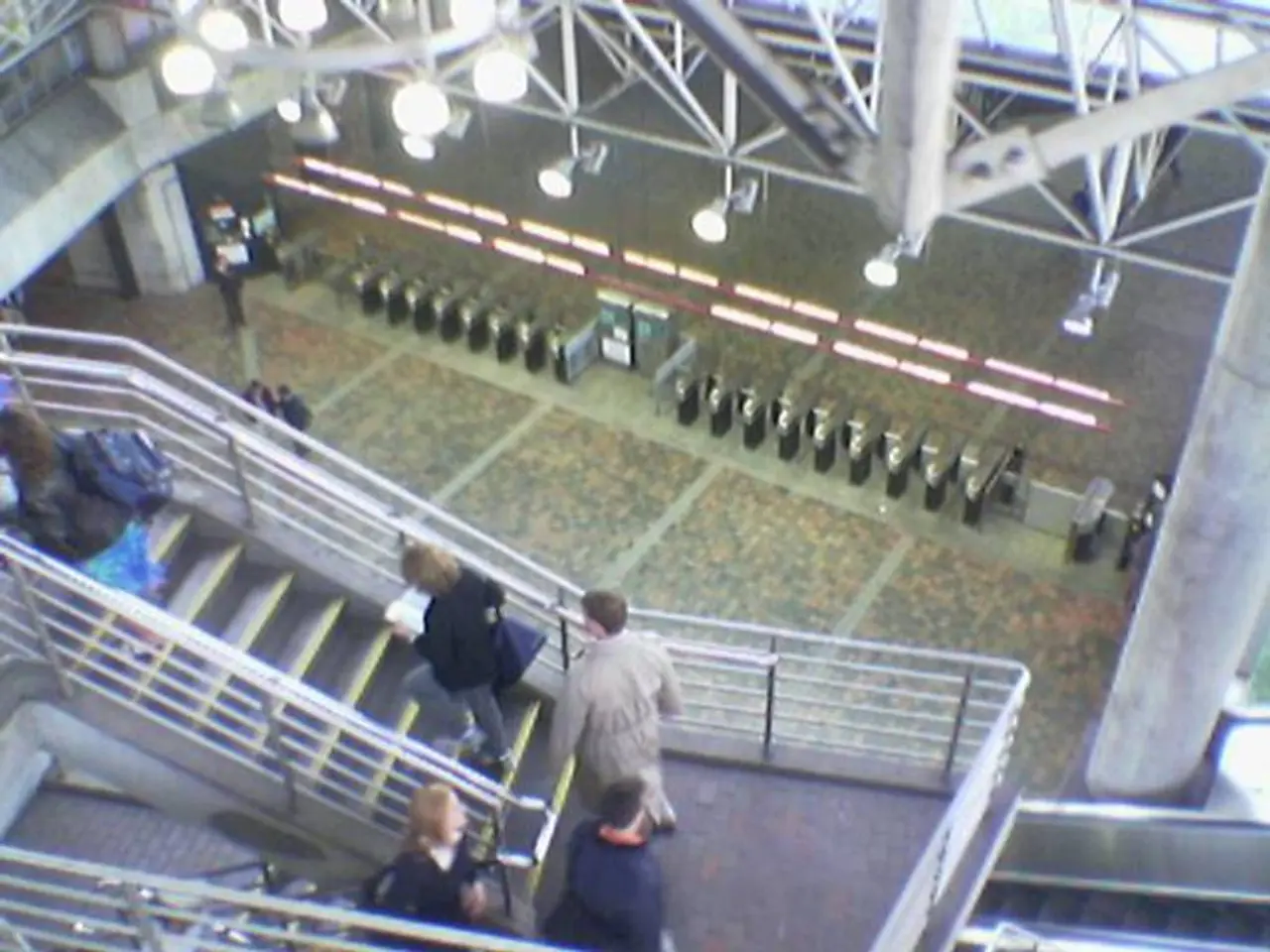TSA Seeks Expert Opinions on Innovative Screening Methods for the Airport Checkpoint of Tomorrow
The Transportation Security Administration (TSA) has issued a Request for Information (RFI) to solicit innovative, turnkey solutions from the private sector that will enhance airport security while improving the passenger experience. This initiative, known as the "Checkpoint of the Future," focuses on AI-driven threat detection, automation, biometrics, and remote screening solutions [1][2][3].
The TSA is aiming to achieve its goal using cost-efficient solutions that comply with safety and security standards. Respondents are encouraged to propose technologies that enhance aviation security effectiveness, reduce operating costs, workforce needs, and manual labor, improve passenger throughput and experience, and maintain compliance with TSA performance standards and regulatory oversight [1][2].
Key areas emphasized in the RFI include the use of artificial intelligence for threat detection and remote screening capabilities, the optimization of workforce capabilities through automation and robotics for screening passengers and baggage, and the use of open standards-based data patterns to securely and efficiently transmit real-time data to the TSA Cloud [1][2].
The TSA Acting Administrator Ha Nguyen McNeill stated that the TSA is seeking innovative private sector solutions to enhance security and improve the passenger experience at TSA checkpoints. Responses will inform future pilots and acquisition strategies [1][2]. Submissions should include details about the technology architecture, operational strategies, and compliance with TSA design standards [1][2].
The TSA is open to ideas and solutions that will help make airport screening faster, more secure, and easier on the traveling public. The goal of the "Checkpoint of the Future" is to improve the passenger experience without compromising safety. This initiative aligns with recent policy changes like removing the shoe removal mandate to drive faster, more secure, and passenger-friendly screening [1][2][3].
Regarding the Screening Partnership Program (SPP), the TSA continues to allow airports to request contracting private companies to perform screening services, operating under TSA’s direction and oversight. This program complements the broader push for private sector involvement and innovation at checkpoints, potentially integrating solutions that fit within the SPP framework [1][2].
Interested parties should submit their responses by August 1, 2025, and can consult the General Services Administration (GSA) website for participation details [1][2][3]. The TSA is particularly interested in solutions that support TSA PreCheck digital ID verification and remote image analysis. Homeland Security Secretary Noem announced the elimination of the mandate for passengers to remove their shoes, which is part of a broader effort to drive a golden age of travel for future innovations [1][2].
References: [1] Transportation Security Administration. (n.d.). Request for Information for the "Checkpoint of the Future" for the Screening Partnership Program (SPP). Retrieved from https://www.tsa.gov/sites/default/files/2021-09/RFI_COTF_SPP_090821.pdf [2] Transportation Security Administration. (n.d.). Screening Partnership Program. Retrieved from https://www.tsa.gov/sites/default/files/2021-09/SPP_Fact_Sheet_090821.pdf [3] Transportation Security Administration. (n.d.). Shoe Screening Policy. Retrieved from https://www.tsa.gov/travel/security-screening/shoe-screening-policy
- The aerospace industry could potentially provide solutions for airport security enhancements, considering their expertise in AI, automation, and data-and-cloud-computing technologies.
- The private sector, particularly those specializing in finance, could offer investments in cutting-edge technology for the "Checkpoint of the Future" project, thereby contributing to wealth-management and personal-finance opportunities.
- Cybersecurity firms may propose secure methods to transmit real-time data to the TSA Cloud for efficient threat detection, aligning with open standards-based data patterns.
- The travel industry could benefit from this initiative, as enhanced security measures may increase passenger confidence and lead to an improved lifestyle and experience during their journeys.
- In terms of car-maintenance, electric-vehicles manufacturers might develop innovative solutions for remote screening of car components, ensuring a safer and faster screening process at airport transportation points.
- The sports industry, with its vast experience in sports-betting technology, could contribute to novel and secure data analysis methods for TSA screening processes.
- Technology companies specializing in AI and artificial-intelligence could offer advanced threat-detection solutions, thereby improving the effectiveness of aviation security.
- By optimizing workforce capabilities through automation and robotics, labor unions in the aviation sector could work towards reducing manual labor needs and workforce requirements, ultimately improving overall business efficiency.
- With the elimination of the shoe removal mandate, the transportation industry is poised for growth, as passengers will no longer face the inconvenience of removing their shoes during screening, leading to a smoother and more enjoyable travel experience.




